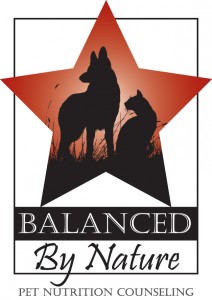
Many well-intentioned pet owners assume that their beloved pets are receiving adequate nutrition in the bags and cans of food they buy at the store. Recent pet-food recalls have caused a lot of people to realize a closer look needs to be had at what exactly is put into dog and cat food. But how do we know a good, safe pet food from a bad one?
I recommend that owners make sure that real meat (chicken, lamb, etc., and not a meat by-product, or something like corn meal), is the first listed ingredient on the bag or can’s ingredient list. But beyond that, what else should we look for? Isn’t it convenient to just trust the pet food manufacture to make sure our furry friends are getting all the nutrients they need? After all, they’re the experts, right? Unfortunately, there are no legal requirements for pet food manufactures to adhere to a set standard of quality ingredients, but there are guidelines set by the Association of American Feed Control Officials (AAFCO) to ensure food meets minimum nutritional requirements. If we want to go beyond that and offer a pet food that provides optimal nutrition (and be sure that’s actually the case, and not just an empty promise printed in bold across the bag), what can we do?
After doing a lot of research on human nutrition and subsequently adjusting my own diet, I broadened my attention onto what I was feeding my pets. I read pet food ingredient lists with this newfound knowledge and came across things I knew I didn’t want my pets consuming. I was increasingly frustrated every time I turned over a bag of food. So began my journey to learn all that I could about pet food and proper nutrition for dogs and cats.
I started by switching pet food brands to ones that don’t add any wheat, corn or soy. Dogs and cats shouldn’t be eating grains; they’re used in pet food as fillers and binders, and add no nutritional benefits for your pet. Plus, they can cause allergies and inflammation. I still knew the processed, preservative-filled dog and cat foods just weren’t giving my pets everything their bodies really needed – and quite a few things they shouldn’t get – so I started adding home cooked meals to supplement the store bought food. I make a combination of chicken (white & dark meat, and skin), liver and heart, and eggs. I add homemade bone broth to their food, and my dog gets carrots as treats. My dog and cats love it, but I know it isn’t nutritionally balanced to feed alone, so it’s remained a supplement.
I have heard over the years about people feeding their pets a raw food diet, but I never gave it much thought because I knew feeding a raw diet was inappropriate. I knew this because in the veterinary profession raw food diets are typically not supported. If a cat or dog had a health issue, there was usually a specific prescription diet waiting on the shelf for them to use.
But what if we fed our cats and dogs in a way nature actually intended? Wild cats and wolves don’t eat food out of a bag or can, they don’t consume synthetic nutrients, and they’d much rather eat the chicken who ate the corn, rather than the corn itself. There is the argument that domesticated cats and dogs are not the same as wildcats and wolves. But research has shown that domestic dogs, like my pug, have DNA only 0.2% different than wolves (as hard as it is to believe). My domestic cats love them some mouse when they can catch one, and many feral cats live exclusively on prey. Cats and dogs are carnivores. They need real meat and fat, not wheat flour or soy protein concentrate. And they definitely have no nutritional requirement for “by-products”, which typically means things like feathers, beaks, and hooves.
So why consider a raw food diet for our pets? My quest to find some answers led me to Heather MacFarlane, a pet nutrition counselor and owner of Balanced by Nature, out of Portland. She works with owners and veterinarians to determine healthful, balanced diets for cats and dogs. What drew me in was her Philosophy of Nutrition statement listed on her website, www.heathermacfarlane.com:
“I believe that most health problems, or dis-ease, are a result of imbalance caused by nutrition depletion. Therefore, it stands to reason that nutrition is key when preventing and treating imbalance. If your pet is to be treated as a whole being (taking the whole animal into consideration when diagnosing and treating and not just the symptoms) then nutrition must be addressed. What our pets eat affects them on a daily basis. There is so much information out there from all directions, each one claiming they know what it is your pet should eat. But, I don’t believe there is one perfect food, meant for all dogs or cats. Pets are individual beings, just like us, and require individualized diets for various reasons.”
I share Heather’s outlook on dog and cat nutrition, and I feel this way about human nutrition, as well. When I made changes to the way I was feeding myself, I felt so much better: more energy, clearer skin, resolved health issues. And I thought I was already eating pretty healthfully, so I can just imagine the health improvements my pets could experience with further diet changes. Nutritional deficiencies can take years before ailments present themselves. Wouldn’t it be prudent of us all to make sure our pets are eating appropriately now, before disease sets in?
I contacted Heather, and she kindly agreed to answer a list of questions I had about proper pet nutrition:
–Why do you recommend a raw diet, and in what circumstances would you recommend against a raw diet?
- Heather explained that raw meat diets are species appropriate for dogs and cats. By design, they require high levels of quality protein, including organ meat, to truly thrive. In order for pet food manufactures to cut cost yet still meet the minimum nutrient requirements set by the AAFCO, they add in gluten meals, like corn, to boost the protein level. But, as Heather explained, our pet’s bodies aren’t fooled, they know the difference between corn and meat, and their health suffers as a result. Cats are obligate carnivores, which means they must get their nutrient requirements exclusively from meat (to include muscles and organs).
- Heather stated that she recommends animals undergoing chemotherapy to be on a home prepared cooked diet versus raw.
–Should cats and dogs be consuming grains?
– According to Heather (and many other sources I have come across), cats should never be fed grains. Cats do not have a carbohydrate requirement, therefore grains of any kind are completely unnecessary and are only added for the benefit of the food manufacture. Grains should also be avoided for the most part in dogs as well. They’re not easy for dogs to digest and can cause inflammation in the GI tract, which can lead to a host of other problems. If the food is labeled “grain-free”, this may mean they are substituting with a starch, like potato, pea, tapioca, yam, etc.. Starches can also pose a problem to health, for instance: white potato based diets may lead to diabetes.
–For those pet owners who are interested in feeding a higher quality pet food, but are not ready to go raw or homemade, what brands do you recommend?
– Heather does not recommend any dry foods for cats. She states that dry kibble is the “furthest thing from what they are meant to eat….the lack of moisture in dry foods promotes a chronic state of dehydration that leads to urinary and kidney issues, as well as many other imbalances”. Canned food has more moisture content, but cans are lined with BPA, and the food itself may still not be optimal.
For dogs, Heather recommends Acana and Orijen lines of food. I checked into the prices of some of these, and they are more expensive than what you’ll find in a regular grocery store. I was really impressed by the ingredients, and although better ingredients do cost more, they also provide better bioavailability. You may be able to offer a smaller quantity of food and still provide your pet with all the nutrients they require. (I’d like to add that an additional bonus to better bioavailability also means less poop! When your pet’s bodies are able to actually utilize more of what they’re eating, there is subsequently less waste and less smell.)
Ninety percent of Heather’s clientele have come to her for help because their pet already has a disease. In the human world more and more people are becoming aware that our modern health issues are a direct result of the way we eat. When we feed ourselves properly, our bodies have a better chance at healing and thriving. The same goes for our furry pets. Heather believes that “food is medicine”, and we are all what we eat. If you or your dog eats low quality, nutrient-poor food substances, health will surely suffer.
Heather will work with clients to determine the right diet for their individual pet; species, age, breed, current health issues, are all things she takes into consideration when formulating a food plan. If you’re interested in providing homemade meals (raw or cooked) to your cat or dog, she will teach you how to do so safely. It’s important to feed a well balanced diet, containing the right amounts of vitamins, minerals, probiotics and digestive enzymes. Homemade meals are really the only way you will know for certain what you’re pet is eating, since you’re the one choosing the ingredients. She made a really good point when she said “no one would feed a meal replacement bar to their child in place of live food, but that is exactly what the processed pet food companies are telling us to do for our pets”.
Heather also mentioned something that really concerned me: the “vitamin packs”; synthetic vitamins and mineral added to some pet foods, usually come from China. Not only do synthetic vitamins and minerals in no way compare to the real deal found in whole foods, but Chinese manufactures haven’t made many of us feel like they’re too concerned with the safety of what they’re mixing into our pet’s foods.
There are many brands of raw cat and dog food available if you’re not interested in making your own. I will be trying both raw and the Orijen line of food with my pets. As I continue on this journey into feline and canine nutrition, I hope you’ll check back for my updates on what I have learned, and how my own pets are doing on their new diets.
You can find Heather at www.heathermacfarlane.com/, or by calling 503-309-6673. She provides house calls to the Vancouver and Portland area, and phone consultations.
Additional resources for cat and dog nutritional information:
Dr. Karen Becker DVM – www.healthypets.mercola.com
The Bark – www.thebark.com
Book: “Real Food for Healthy Cats and Dogs”, by Dr. Karen Becker DVM
Where to find high quality bagged, canned & raw dog and cat food in our area:
Beastie Boutique – 13023 NE Hwy 99 Suite 8, Vancouver, 574-6400
All Natural Pet Supply – two locations: 10501 NE Hwy 99 Suite 39, Vancouver, 573-0667
& 3425 SE 192nd Ave. #108, Vancouver, 694-7387
Canine Utopia – 2309 Main St, Vancouver, 737-7881
Whole Foods – 815 SE 160th Ave. Vancouver, 253-4082
New Seasons Market – 2100B SE 164th Ave. Vancouver, 760-5005
Remnant Farms Feed & Supply – 1501 Guild Rd. Woodland, 225-5980
Natural Pet NW – 212 NE 164th Ave. Vancouver, 253-5495


